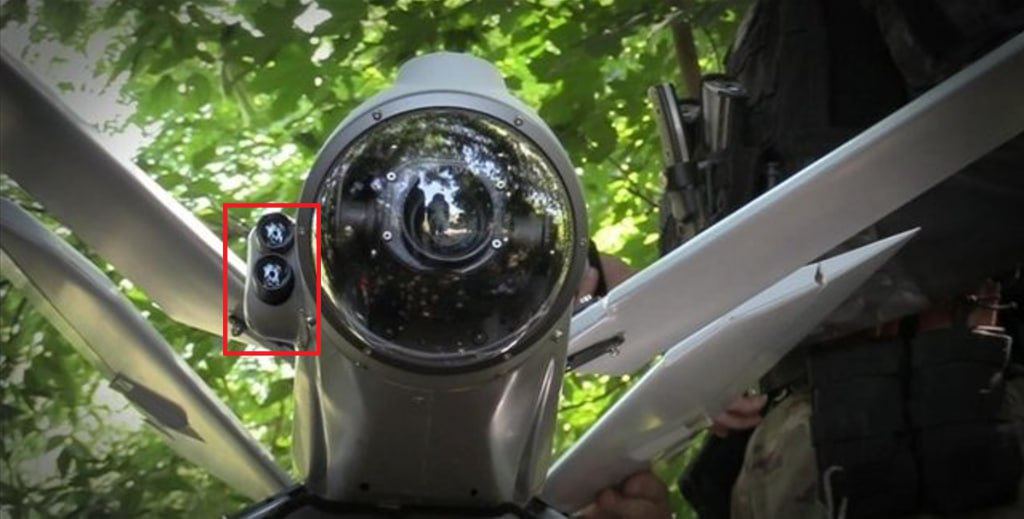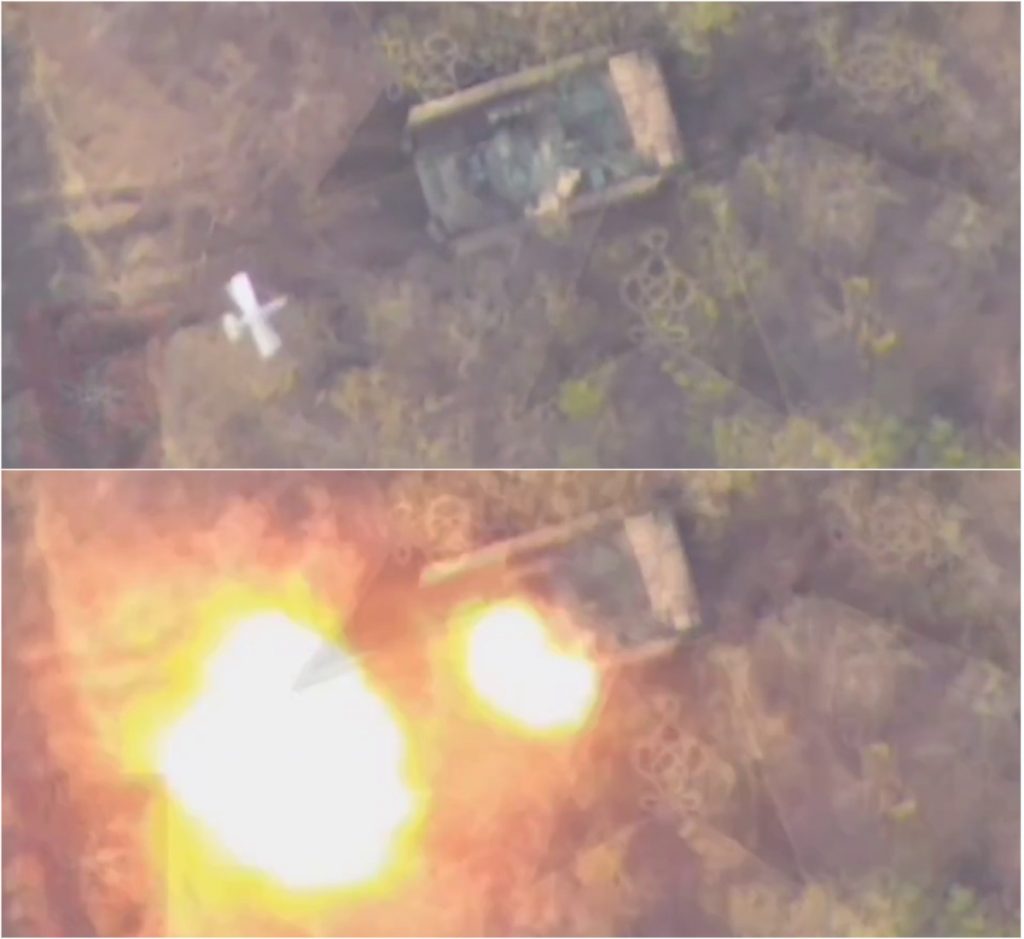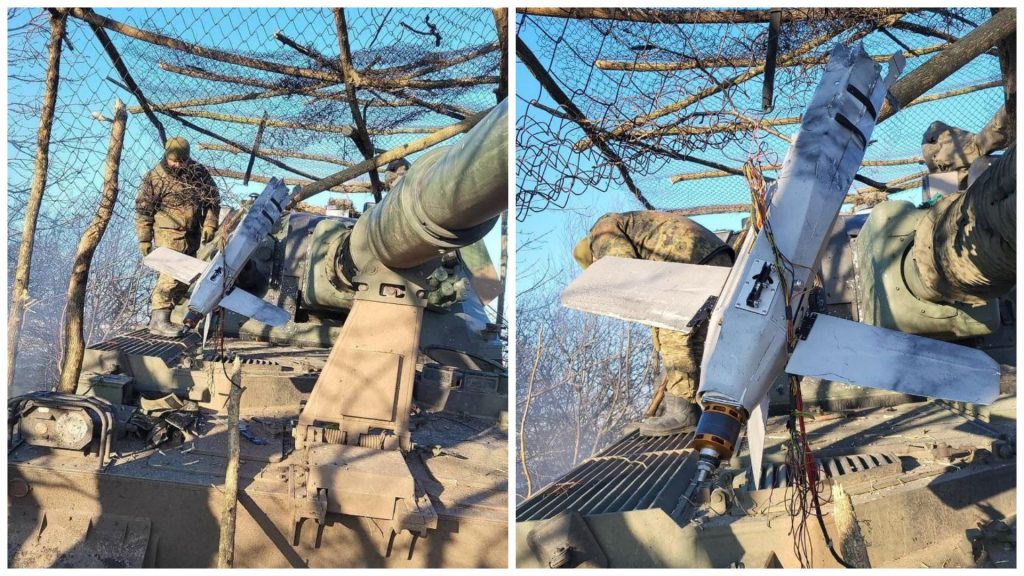Russian army units have begun receiving an advanced version of the Lancet kamikaze drones, with a secondary camera unit and a dual tandem warhead that go through overhead protective cages and Explosive Reactive Armor (ERA). Previous reports have claimed that Lancets are now capable of autonomous flights and automatic target recognition.
This specific variant has a different and striking design with a main tubular body and the wing root. Interestingly, the Ukrainian military has admitted the danger posed by the new variants and has discussed technical and tactical countermeasures to tackle it while loitering.
Reports over the last few months note newer advanced versions of the Lancet with upgraded engines, warheads, ranges, and optical and tracking technologies. All the latest features appear not packed in a single variant but in different combinations across various versions and production batches.
This also means different Russian Ground Forces and Airborne Forces units might not have the same variants. The Lancets are, maybe, allocated according to the needs of the particular Russian army formations and the sector (northeastern, eastern, southeastern, or southern) in Ukraine, with a certain degree of customization.
The new drones can overcome reactive armored anti-tank grids and anti-drone nets, challenging Ukraine’s defenses. Older Lancet models would get tangled in Ukrainian anti-drone traps and fail to detonate correctly.

Lancet’s New Laser Eye & Tandem Warhead
According to the Russian Telegram channel ‘uav_tech,’ “A new modification (has) appeared at the front. They are equipped with LIDAR systems. Thus, the Lancet now explodes when approaching the target, and the cumulative jet is already burning through the armor. Grids and meshes lose their effectiveness. Earlier automatic target acquisition based on neural networks was added to the Lancets,” said the post.
The last part of the message referred to the Lancets destroying a Czech RM-70 Multiple Launch Rocket System (MLRS) and a DANA Self-Propelled Gun (SPG) in mid-October. This action distinctly showed a green-colored box near the targeting reticule from the Lancet’s nose camera feed, which Russian ‘military bloggers’ (or mil bloggers as they are called) concluded the drone was employing an automatic target identification technology and semi-autonomous flight. A EurAsian Times report quoted the leading and popular Military Chronicles Telegram channel that inferred this.
The LIDAR mentioned by TG uav_tech could mean Light Detection and Ranging (LIDAR). LIDAR is a remote sensing technology that uses ultraviolet, visible, or near-infrared light to examine the Earth’s surface.
It is unclear how the earth mapping and ecological study-centric technology has a military application. But an informed guess can be made based on the claim that the Lancet can penetrate chain link shields and metal cages.
LIDAR can map various levels and depths of the Earth’s terrain. In this case, The upgraded Lancets’ “laser rangefinder with two optical cameras to measure the distance to target,” said Ukrainian military publication Militarnyi. “They can then detonate at a distance before impacting the target, enabling the shaped charge jet created by the explosion to cover the remaining distance and strike the target.”

In this case, the LIDAR can identify the metal cage/shield ahead of a tank or an artillery gun and program the warhead accordingly. Thus, the primary explosive detonates after the shield or cage has been breached.
“The cumulative jet formed by the explosion flies the last meters and hits the target. This technical solution allows you to solve the problem with anti-drone nets, in which drones of old models with a shock detonator often get confused and do not work,” the Militarnyi report added.
A screen grab of a recent Lancet strike on a US-made Bradley Infantry Fighting Vehicle (IFV) shot from an overhead drone showed two different explosions just as the aircraft approached the tank.
One explosion was further away from the Bradley, while the other was precisely when it struck its body. The effect and level of damage on the Bradley is not known. The technology beats the anti-drone nets, in which several older models of the Lancets often got stuck.

Lancets Unprotected by Electronic Warfare
The Militarnyi suggested “powerful electronic warfare” as the only credible means to counter the Lancets. “The work of Lancets nearby can be noticed thanks to radio frequency spectrum analyzers. The Lancets and their escort scout operate in the 900 MHz control range. More precisely, 868-870 MHz and 902-928 MHz. They have a characteristic shape in the form of two sharp peaks,” it said.
The report quoted expert Serhii Flesh, who noted how Russia’s own ground-based EW units do not protect Lancets since they do not want the jamming to interfere with the operation of their drones. Ukrainians, therefore, identified this pattern and prepared for Lancet attacks every time Russian jamming and EW “interference” suddenly stopped.
“On 1575 MHz, there was Russian interference 24 hours a day, and suddenly it disappeared. The drones didn’t see the GPS, and suddenly they did. So we are waiting for Lancet,” said Serhiy.
- The author can be reached at satamp@gmail.com
- Follow EurAsian Times on Google News




